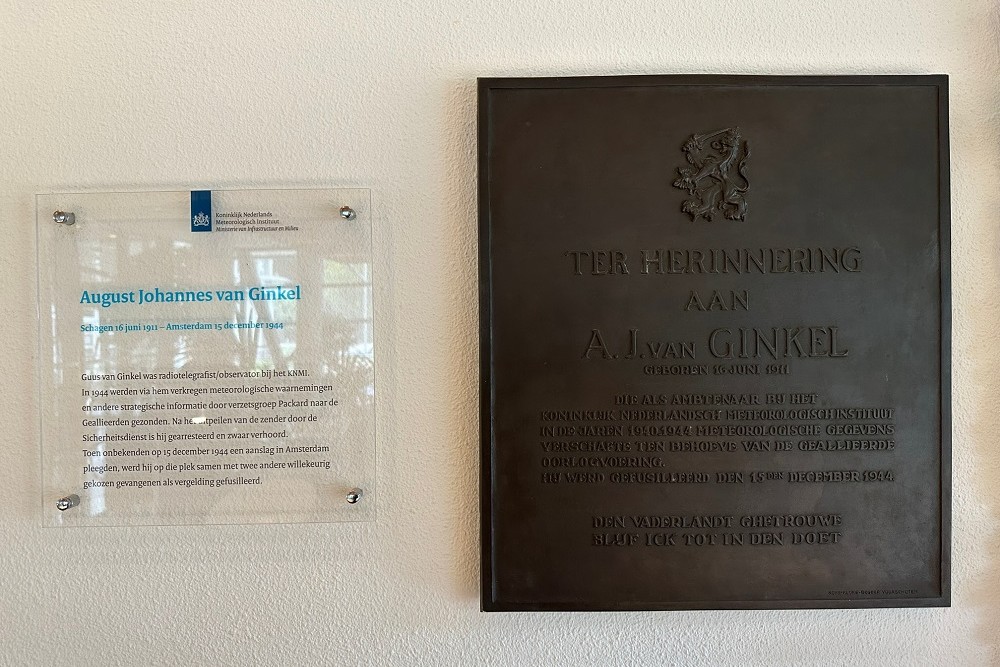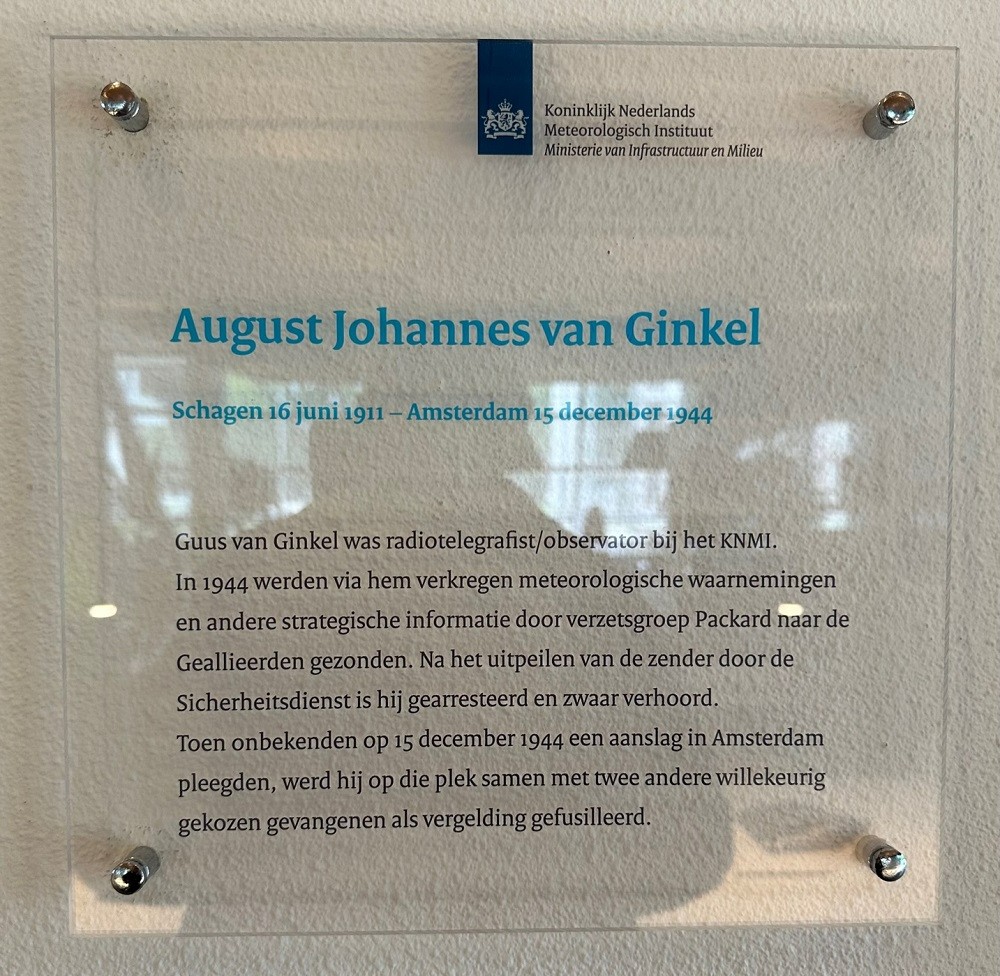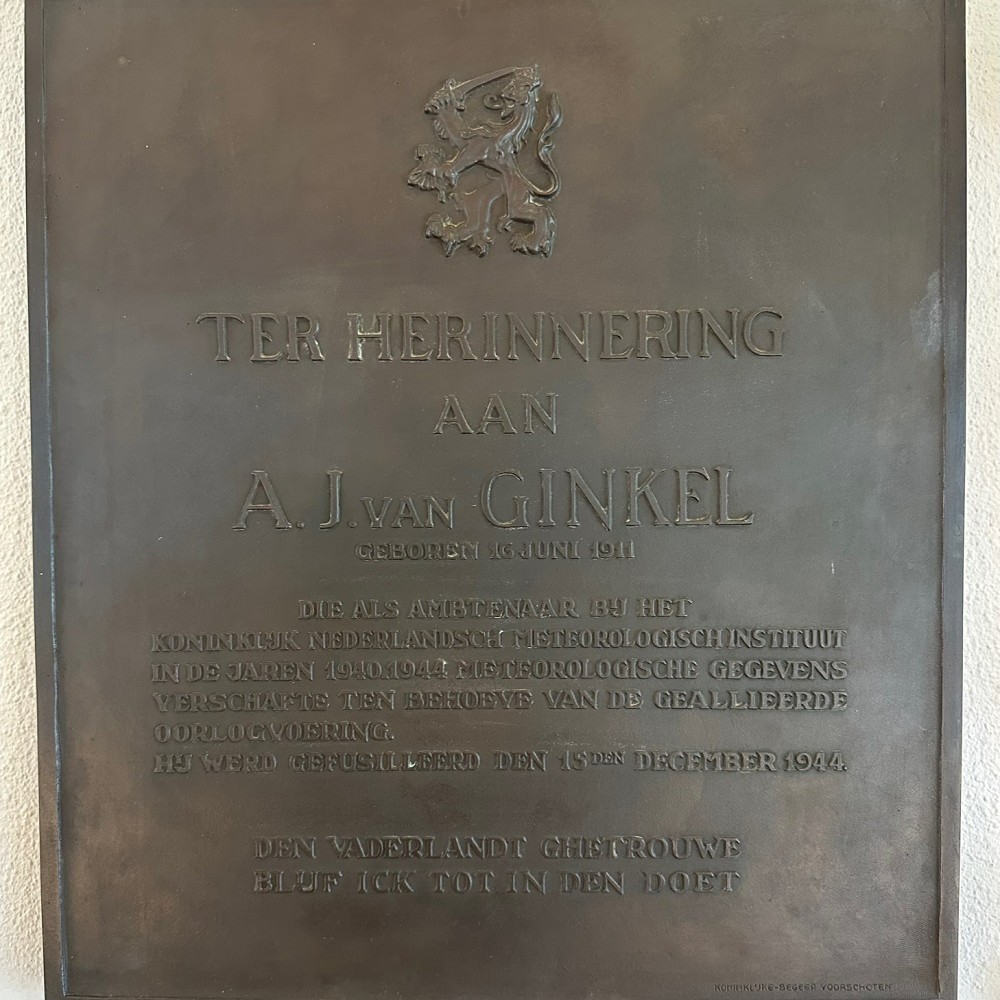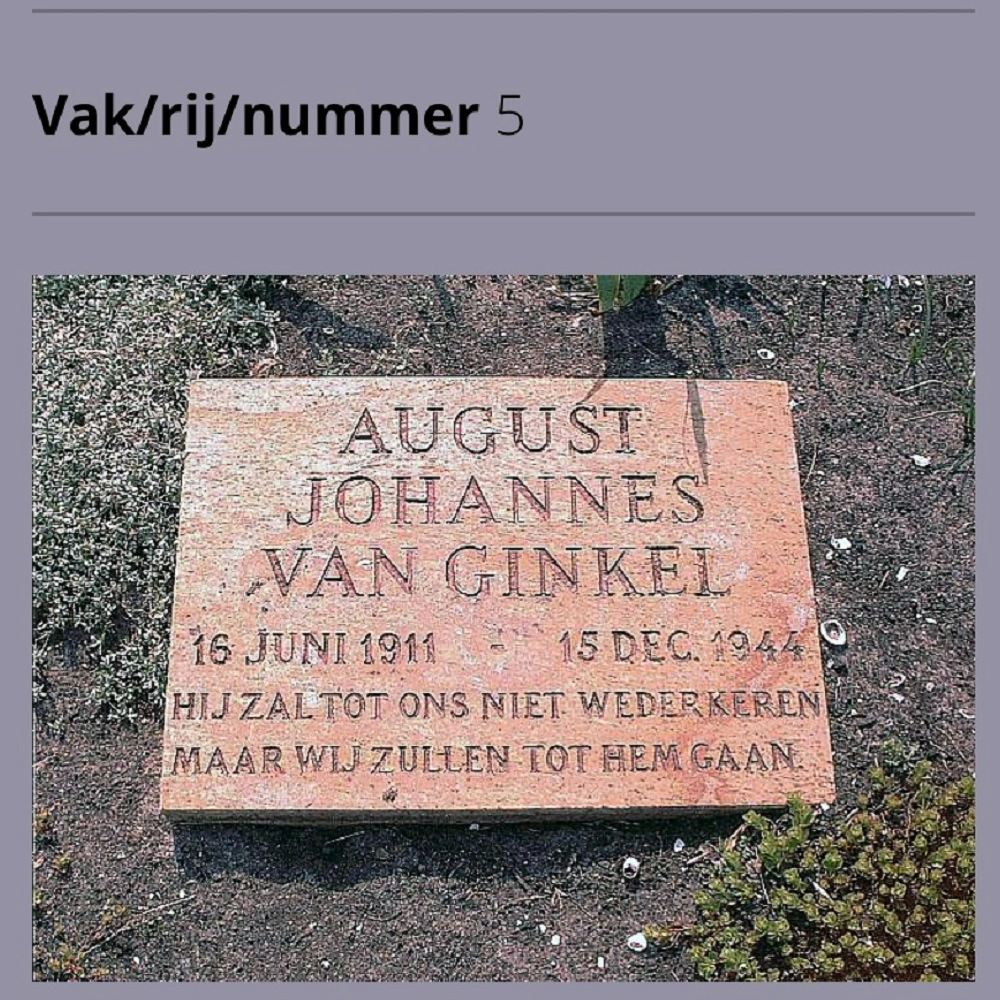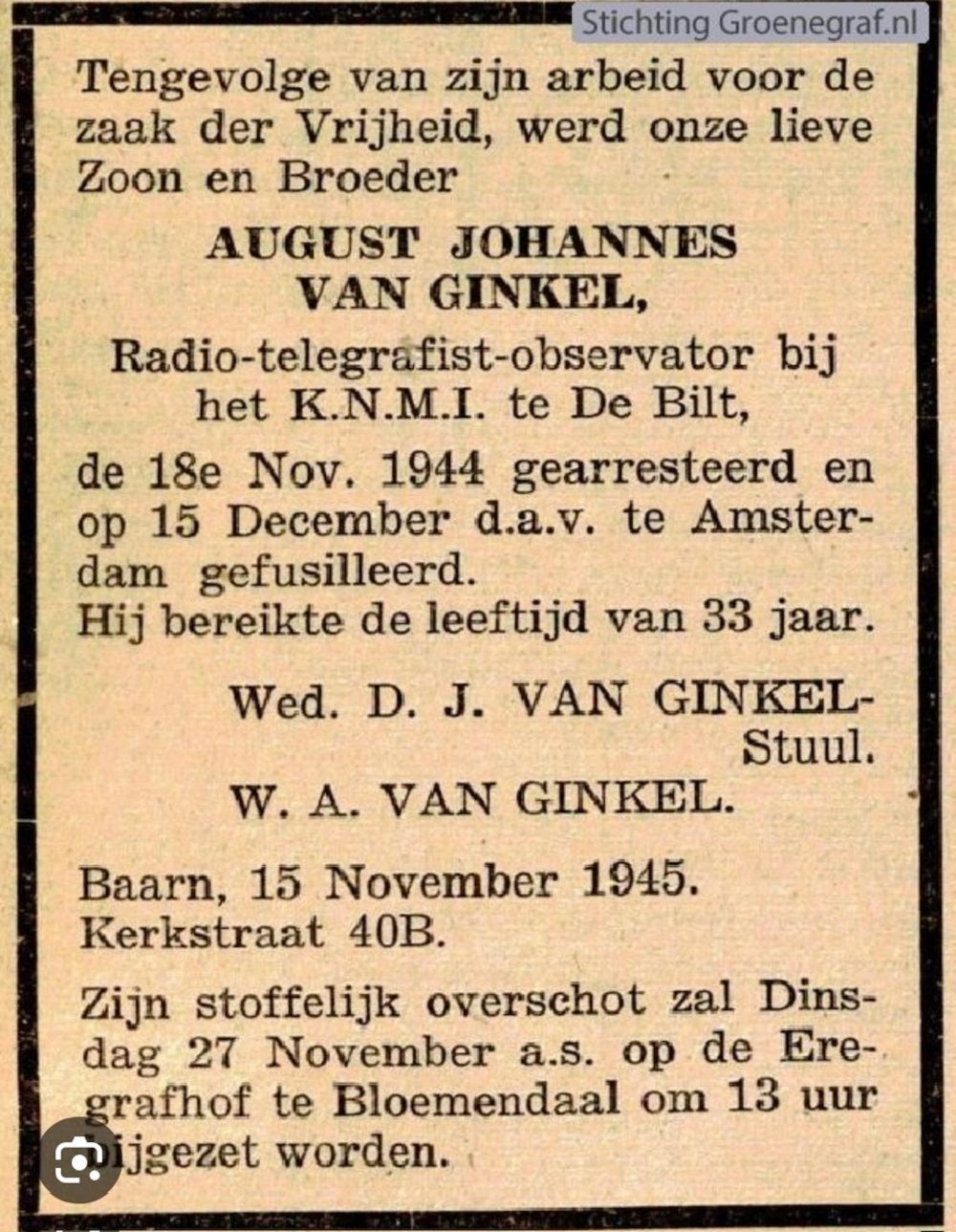Memorial KNMI Guus Van Ginkel
August Johannes (Guus) van Ginkel was born on June 16, 1911 in Schagen. As a radio operator/observer 2nd class, Guus was permanently employed by the KNMI. In 1944 he came into contact with Th. Dubois.
As a radio operator in the house of doctor Ada van Rossem in Boothstraat in Utrecht, Dubois operated a transmitter of the Packard group, an intelligence unit of the Dutch resistance. All kinds of important information was sent to London by this group, which had transmitters in a number of places. The Utrecht channel had the pseudonym 'Irene-Met', where 'Met' of course referred to meteorology. From
On October 1, 1943, weather data from Central Netherlands was sent from Boothstraat every day at 2 p.m. The observations were made in the garden. Dubois had access to a ship's barometer, a barograph, a thermometer and a hygrometer. Van Ginkel provided Dubois with a series of (climatological) observations from the KNMI once a week.
The observations were passed on via J.F. Knufman, a caretaker at the KNMI and police inspector R. van der Pol. These KNMI observations were used to validate the observations from Boothstraat. This was necessary because the observations in Booth Street were urban observations, which were not representative of a larger area. By validating them with the observations of the KNMI, they became so and could be used by English meteorologists in the weather maps.
It would be obvious that the KNMI observations were also sent to London, but I know nothing about that.
It was not surprising that Van Ginkel came into contact with the Packard group. At the KNMI he shared a room with Buijense, who already worked for Irene-Met.
In September 1944, another section of Packard started working with the transmitter. This section mainly forwarded strategic information. Van Ginkel was friends with a girl who worked as a telephone operator at the police liaison service on the Maliebaan in Utrecht. Because of her job, the service also worked for the Wehrmacht, she had important information that ended up in London via Van Ginkel.
A lot of data about the train run came to London this way.
This was crucial information, because due to the railway strike in September 1944, the Germans started providing train transport with their own equipment. Some of these transports carried the V1 and V2 rockets intended to be fired at England. The information from Utrecht allowed the Royal Air Force to bomb a number of these trains.
The illegal work of Van Ginkel and the Packard group in Boothstraat ended when the German Security Service (SD) finally managed to probe the transmitter. On October 9, 1944 they raided Boothstraat. Dubois, who had just finished a broadcast, heard them coming and ducked into his hiding place, the bowels of a couch. The Germans did find the transmitter and Ada van Rossem. She was caught red-handed and could not deny it, and courageously took all the blame. During the on-site interrogation, the Germans sat down on the couch where Dubois was hidden without finding him. Ada van Rossem was interrogated heavily and was held in the Detention Center on the Amstelveenseweg in Amsterdam until the liberation. She survived.
Dubois was able to escape and went into hiding, just like Guus van Ginkel, who found a hiding place near Buijense on the Brandenburgerweg in Bilthoven. Fortunately, rolling up the transmitter had no major consequences for the Allies. After the liberation of the South of the Netherlands, the greatest urgency for transmitting weather data was over. The Allies could now collect them in that area themselves. After a few weeks the coast seemed clear and Van Ginkel went back to work at the KNMI. On November 17, he and Buijense were sitting in their room when the doorman reported that there was a visitor for Van Ginkel. Because his pseudonym was mentioned, everything seemed safe.
However, they turned out to be SD officers and Van Ginkel was arrested. He was transferred via the House of Detention at Wolvenplein in Utrecht to the House of Detention at Weteringschans in Amsterdam. He was heavily interrogated by the Germans, but I do not know any details about this.
In the early morning of December 15, 1944, unknown persons committed an attack on the railway along the Tugelaweg. In reprisal, the Germans took three random prisoners from the detention center the same day and shot them at the scene of the attack. Guus van Ginkel was one of the three.
Do you have more information about this location? Inform us!
Source
- Text: Jan Molenaar en KNMI
- Photos: Jan Molenaar
Nearby
Museum
Point of interest
- House Anton Mussert Utrecht - Utrecht
- Headquarters Nationale Jeugdstorm - Utrecht
- Office NSB Representative for state affairs - Utrecht
Monument
- Memorial Victims AZU - Utrecht
- Memorial Stone Provincial House Utrecht - Utrecht
- Monument Fort De Bilt - Utrecht
Cemetery
- Dutch War Grave Groenekan - Groenekan
- Dutch War Graves St. Barbara - Utrecht
- Graves Polish Veterans St. Barbara - Utrecht
Remembrance Stone
- Stumbling Stone Torenstraat 12 - De Bilt
- Stumbling Stone Blauwkapelseweg 25 - De Bilt
- Stumbling Stone Waterweg 23 - De Bilt
Fortification
- Group Shelter Type P Griftenstein - De Bilt
- Group Shelter Type P Griftenstein - De Bilt
- Group Shelter Type P Griftenstein - De Bilt
